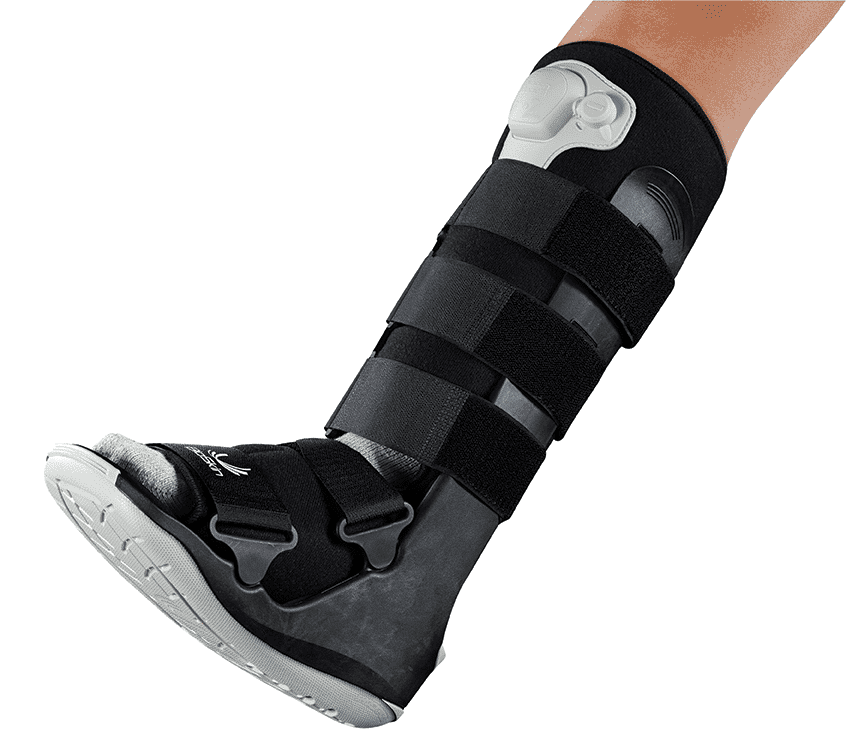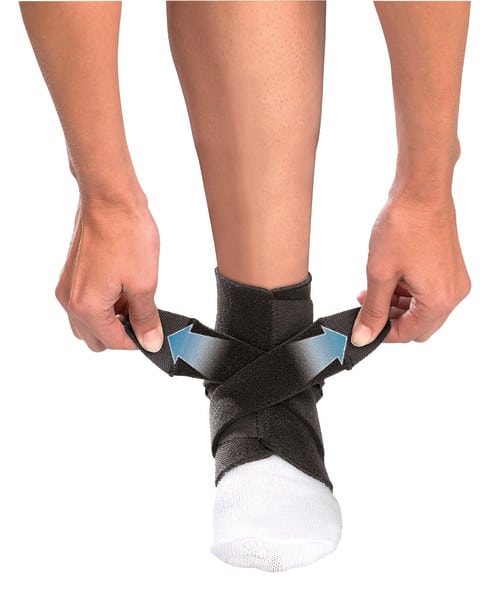6 Side Effects Of Wearing A Walking Boot & Useful Suggestions For Managing Them
Walking boots have become increasingly popular as a form of orthopedic footwear for treating ankle sprains and many other foot injuries. Wearing a walking boot, also known as a cast boot or medical walking boot, is commonly prescribed to support and immobilize the foot or ankle during the healing process of fractures, sprains, or other lower limb injuries.
In this article, we will ask and answer one of the most prevalent questions posed by individuals who are about to start using a walking boot – what are the side effects of wearing a walking boot? We will then move on to suggest what can be done to manage these side effects.
Although we hope you will find the information below useful, we also counsel you to seek the advice of your healthcare advisor before making any final decisions on these questions.The advice we present should not be regarded as professional and represents our opinions only.
What Are The Side Effects Of Wearing A Walking Boot?
While walking boots are generally effective in promoting healing and providing stability, they can sometimes cause certain side effects or discomfort. It’s important to note that individual experiences may vary, and consulting with a healthcare professional is advised for personalized information. Here are some potential side effects associated with wearing a walking boot:
Skin Irritation
Prolonged use of a walking boot may cause skin irritation or pressure points due to the constant contact between the boot and the skin. This can result in redness, itching, or the development of blisters or sores. Ensuring proper fit and using padding or moleskin can help minimize this discomfort.
How To Manage
To manage this problem, we suggest the following:
- Ensure that the boot is properly fitted and not too tight or loose.
- Use padding, moleskin, or specialized orthopedic products (such as Spenco’s Second Skin) to reduce friction and pressure points.
- Keep the skin clean and dry, and follow any specific instructions from your healthcare provider regarding wound care.
Muscle Weakness
Wearing a walking boot limits movement and immobilizes the foot and ankle, which can lead to muscle weakness and atrophy. When the muscles are not actively engaged, they may lose strength and tone. Physical therapy or specific exercises prescribed by a healthcare professional can help maintain muscle strength during the immobilization period.
How To Manage
We suggest the following steps to manage muscle weakness:
- Perform exercises recommended by your healthcare professional to maintain muscle strength in other parts of the body.
- Consider engaging in non-weight-bearing exercises, such as upper body workouts or swimming, to maintain overall fitness during the immobilization period.
Reduced Range of Motion
The restricted movement imposed by a walking boot can lead to a reduced range of motion in the ankle joint. Over time, stiffness and tightness may develop, making it important to follow prescribed rehabilitation exercises or physiotherapy to regain flexibility and restore normal joint movement.
How To Manage
To manage this issue, we suggest the following:
- Follow any prescribed rehabilitation exercises or physiotherapy to regain flexibility and restore normal joint movement.
- Perform gentle stretching exercises for the unaffected areas to maintain overall flexibility.
Gait Changes
Walking boots alter the normal gait pattern due to the added weight and bulkiness of the boot. This can result in changes in walking mechanics, potentially causing discomfort in other areas such as the knee, hip, or lower back. Physical therapy can help address gait abnormalities and prevent secondary issues.
How To Manage
Gait changes may be countered by:
- Maintain Proper Posture: Stand up straight with your shoulders back and your head aligned with your spine. Keeping good posture helps distribute your body weight evenly and promotes a more balanced gait.
- Take Smaller Steps: Walking in a walking boot may feel different and require adjustments to your stride. Take slightly shorter steps and focus on maintaining a natural rhythm while walking. This can help minimize the exaggerated or uneven gait that can sometimes occur.
- Use Assistive Devices: Consider using crutches or a cane, as recommended by your healthcare professional. These devices provide additional support and stability while walking, allowing you to maintain a more normal gait pattern.
- Get Physical Therapy: If gait changes persist or become more pronounced, consult with a physical therapist who can provide specific exercises and guidance to help correct your walking pattern. Physical therapy may include gait training exercises and strengthening exercises to address muscle imbalances that can contribute to abnormal gait.
- Practice Weight Shifting: Practice shifting your weight evenly between the affected and unaffected limbs. This can help promote balance and symmetry in your walking pattern.
- Take it Slow: Adjusting to walking in a walking boot may take time. Take it slow and be mindful of your movements. Pay attention to how your body feels and make any necessary adjustments to maintain a more natural gait.
Discomfort and Fatigue
Wearing a walking boot for an extended period may cause discomfort, especially if the boot is not properly fitted or if pressure points develop. The added weight and altered gait can also lead to increased fatigue during walking or prolonged use. Resting and elevating the foot when possible can help alleviate discomfort and reduce fatigue.
How To Manage
You can try managing this issue by:
- Take regular breaks and elevate the foot to reduce swelling and alleviate discomfort.
- Use over-the-counter pain medications, as recommended by your healthcare provider, to manage pain or discomfort.
- Apply ice packs (covered with a cloth) to the affected area for short durations to help alleviate swelling and discomfort.
Balance and Stability Issues
The size and bulk of a walking boot can affect balance and stability, increasing the risk of falls or trips. It is important to take precautions, such as using assistive devices (such as crutches) as recommended, being mindful of uneven surfaces, and taking extra care when navigating stairs or other challenging environments.
How To Manage
If you experience this problem, we suggest the following strategies in order to improve your balance and stability:
- Use assistive devices, such as crutches or a cane, as prescribed by your healthcare professional to enhance stability and prevent falls.
- Be cautious when walking on uneven surfaces or navigating stairs. Take your time and pay attention to your surroundings.
Conclusion
In this article, we have listed some of the more commonly reported side effects of wearing a walking boot and suggested some ways in which these problems can be managed.
However, it’s crucial to follow the instructions provided by a healthcare professional regarding the duration and usage of the walking boot. If you experience persistent or severe side effects, it is recommended to consult with your healthcare provider for further evaluation and guidance.









I pulled ligaments and tendons in my ankle. But hopping around on it to get to the orthopedic doctor made it swell up and hurt on big toe joints and arch?!? My good foot is hurting the same now and my hip and lower back since wearing the boot. I wasn’t given detailed instructions but she said I could walk on it in the boot!!! So I did!!! Now I am worse. When I step down barefoot my toes aren’t touching the floor the same. 😭
To me, doctors should be ethically and even legally required to talk to you, and completely explain the possible side effects. Also what you might run into and what to do. about it. A print out of the above information should be handed out. Not to do so, causing other physical problems, even including possible surgery, should be totally reported with consequences for the doctor! Inexcusable!
Is it possible to have broken or bruised the heel of other foot while using a walking boot. My opposite heel hurts sooo bad
Hello Nancy – this may be due to unequal height of the boots and the effect this has on your gait. We would suggest checking with your doctor or podiatrist. Thanks.
I got neuropathy and big toe numb from boot pressure..after 3yrs not better
tengo fractura de la base del 5o metatarsiano izquierdo con desplazamiento de más de 2 mm y me recomendaron la bota pero me duele la cadera derecha y se me duerme mi lado izquierdo
porque?
Two weeks since I stopped using my boot fir a fracture metatarsal but other leg is giving me some trouble aching when walking